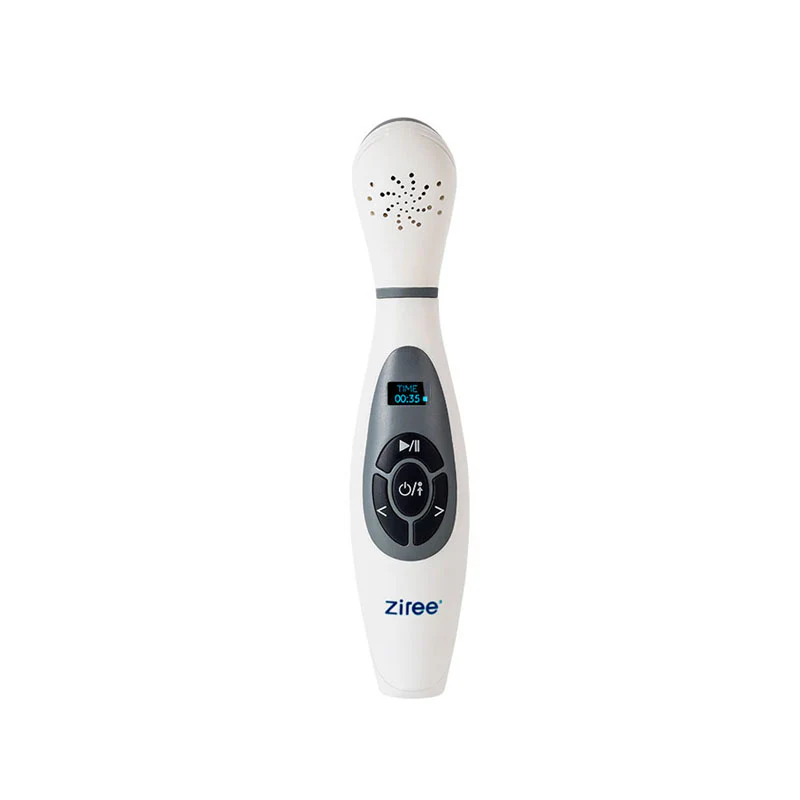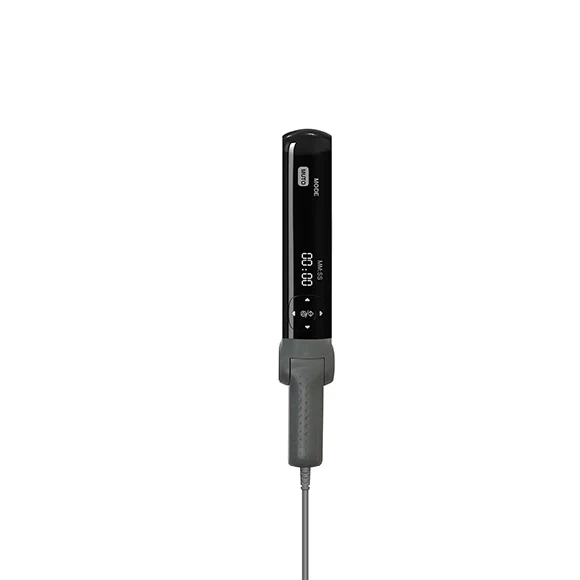311nm Phototherapy Device
- Wide Selection
Quality Assurance
Global Reach
product description
Phototherapy is a form of treatment that uses ultraviolet light to treat skin conditions. Phototherapy can reduce the appearance of psoriasis and eczema symptoms.
This form of treatment is safe for all ages and is a common treatment for newborn jaundice.
What is phototherapy?
Phototherapy, also known as light therapy, is a common form of treatment that uses bright, ultraviolet (UV) lights on your exposed skin. Phototherapy can treat several types of skin conditions, including psoriasis and eczema.
What is ultraviolet light?
There are different types of ultraviolet (UV) light, or ultraviolet radiation, that are part of the electromagnetic spectrum. The sun produces UV light that reaches the Earth. UV light helps you produce vitamin D, which is essential to help your body survive. Too much UV exposure can damage your skin.
The UV light used in phototherapy is the same type of light emitted from the sun. Your provider will control the strength of the light and monitor the length of time that your skin will have exposure to UV light to prevent skin damage.
What are the types of ultraviolet light?
There are different types of ultraviolet light for medical procedures based on the type of ultraviolet and the size of the wavelength:
UVB: Ultraviolet light B (UVB) has a medium wavelength that reaches the top layer of your skin. Overexposure to UVB light can cause sunburns.
UVA: Ultraviolet light A has a long wavelength that reaches the first two layers of your skin and treats conditions that affect these deeper regions of the skin. Overexposure to UVA light can cause sunburn and wrinkles.
What are the different colors of phototherapy lights?
There are different types of phototherapy lights available to treat different conditions. Each type uses a different color light:
Blue light therapy: Blue LED lights are similar to the lights emitted from your cell phone. Blue lights (neoBLUE®) give off a blue hue and are a common form of treatment for jaundice.
Red light therapy: Red LED lights are lights that have a red hue. Laser lights are a form of red light. These lights commonly treat wrinkles, redness, acne and scars.
Who can get phototherapy?
Anyone can receive a phototherapy procedure if their provider prescribes it as a treatment for their diagnosis. Children and adults can receive phototherapy treatment.
Is phototherapy safe for everyone?
Phototherapy is a safe form of treatment but there may be more risks of side effects if you have certain medical conditions. Your provider will let you know if phototherapy is safe for you. Phototherapy may not be recommended if:
You have sun allergy. This is a rare condition, and not a real allergy, but you break out in hives when exposed to the sun.
You’ve had certain forms of skin cancer and are advised to have UVA phototherapy.
You’re pregnant or nursing.
You have liver disease.
You have lupus.
You have a genetic disease that makes you more prone to damage from the sun, such as xeroderma pigmentosa.
You take medication that leads to increased sun sensitivity.
Is phototherapy safe for babies?
Yes, phototherapy is a safe treatment option for babies. Babies who are born with jaundice have too much bilirubin in their bodies, which makes their skin and eyes look yellow. Blue UV light therapy helps babies get rid of the bilirubin so it doesn’t become harmful to them. You may even take a lamp or lighted blanket home when your newborn is discharged from the hospital. Babies are monitored carefully during treatment.
What conditions does phototherapy treat?
Phototherapy helps treat several conditions. The most common include:
Psoriasis.
Eczema.
Itch.
Newborn jaundice.
Vitiligo.
Mycosis fungoides.
Morphea.
Procedure Details
What happens before a phototherapy procedure?
Before your phototherapy procedure, your provider will set up the equipment in a hospital or a treatment center. They’ll give you protective eyewear to cover your eyes. You may need additional personal protective equipment depending on the location of your therapy, like a face shield or a blanket to cover parts of your body that aren’t receiving treatment. Your provider will give you sunscreen to put on your skin before your procedure. If you’re only getting treatment on part of your body, they’ll give you instructions on how and where you should apply the sunscreen. You may need to remove some or all of your clothing for this procedure depending on what’s being treated.
What happens during a phototherapy procedure?
During a phototherapy procedure, your provider will verify that you’re wearing your personal protective equipment, like eye protection, before turning on the ultraviolet light. The way that the UV light passes on your skin is unique to each type of treatment:
UVB light: You’ll stand in a box-like structure, similar to an upright tanning bed, where a light source will pass over your skin. Once you’re inside, the lights will turn on for a set amount of time by your provider. If you’re only treating a small section of your skin, you’ll sit or lie down on a table and your provider will wave a wand with a light in it across your skin.
UVA light: The procedure is similar to UVB. Sometimes, medications are used to help the treatment work better. Psoralen is a plant chemical that makes your skin more sensitive to UVA light. If you have psoralen UVA treatment, your provider will begin by letting you soak in a bath that contains psoralen or give you psoralen to take by mouth or put on your skin before your treatment.
Excimer laser light: Lasers deliver more focused ultraviolet light to smaller areas of your body. After exposing the area to be treated, your provider will have you lie on a table before moving the laser light over a small area of your skin that needs treatment.
How long does a phototherapy procedure take?
Phototherapy procedure times vary depending on the size of your treatment area and the strength of UV light your provider uses. Repeated treatments are needed for the best results. Your first session could last a few seconds and your final session could last a few minutes with UVB therapy and up to an hour for UVA therapy. The length of time you’re treated and the total number of treatments you need can vary greatly depending on the disease and your skin. Your provider will help figure out your personal treatment plan.
What happens after a phototherapy procedure?
After a phototherapy procedure, your provider will give you instructions on how you can protect your skin, which could include:
Wearing sunscreen on the treated areas of your skin and/or clothing to protect your skin from the sun.
Wearing eye protection when outdoors.
Using a moisturizer daily to prevent dry skin.
Avoiding sun exposure and avoiding tanning beds, which could increase your chances of a burn.
Risks / Benefits
What are the advantages of phototherapy?
Phototherapy offers several benefits, including:
Reduces inflammation in your skin.
Prevents flare of symptoms for skin conditions like eczema and dermatitis.
Minimizes itchiness.
What are the risks or side effects of phototherapy?
There are potential risks with phototherapy treatment that could include:
Skin redness that fades within 24 hours.
Burns or blisters, similar to a sunburn.
Dry skin.
Nausea if you’re taking psoralen.
Increased wrinkles or fine lines (premature aging) with prolonged treatment.
Development of skin cancer (basal cell carcinoma, squamous cell carcinoma, melanoma) with prolonged use of UVA therapy.
Your provider will talk to you about the risks and side effects before treatment. It’s also important to discuss any medications or supplements you take to be sure nothing interacts with your treatment.
Recovery and Outlook
What is the recovery time for a phototherapy procedure?
After a phototherapy procedure, you can immediately go back to your normal activities. It takes multiple treatments to see results on your skin. Most people see improvements to their skin after six to eight treatments, but it could take between 15 and 25 treatments until you see results. Certain conditions treated with UVA light take much longer to treat.
Your provider will recommend you take steps to protect your skin from further UV exposure, especially from the sun, after treatment. You may experience some skin redness or hyperpigmentation, where your skin appears darker after treatment, this may go away after 24 hours. If you feel a burning sensation on your skin that lasts more than a couple of days after treatment, contact your provider.
When to Call the Doctor
When should I see my healthcare provider?
Visit your healthcare provider if:
You have a burning sensation on your skin more than 24 hours after treatment.
You have flu-like symptoms (nausea, vomiting, fever or chills) after treatment.
Your skin blisters.
You have signs of an infection (a swollen wound that won’t heal, a crusty sore that leaks pus).
You have vision problems that weren’t present before treatment.
Additional Common Questions
Can jaundice come back after phototherapy?
It’s common for newborns and babies to have jaundice even after phototherapy treatment. High levels of bilirubin (hyperbilirubinemia) in your baby’s blood cause jaundice. Too much bilirubin can cause permanent brain damage (kernicterus) if it’s not treated. Babies can get a skin test to see if they have too much bilirubin, and then a blood test to determine the cause of their jaundice. Your provider will decide if UV treatment is necessary and then they’ll keep checking the bilirubin level to be sure it’s getting better. After treatment, your baby will have bilirubin checked to be sure it doesn’t get high again.
Can I do phototherapy at home?
Yes. If your newborn has jaundice and no other health complications, your provider might offer a treatment plan that lets you do phototherapy at home. You can use a phototherapy lamp or fiber-optic blanket (Biliblanket®) safely while staying in the comfort of your own home.
Some adults also use at-home phototherapy. People who experience seasonal affective disorder (SAD) can have depressed mood during the winter, when there’s less sun. UV lamps replicate sunlight and are used to make your body think that it’s warmer and sunnier than it really is. This helps your body release serotonin, which is a neurotransmitter that can improve your mood. Be sure to look for 10,000 lux lamps if you use one for SAD.
During at-home therapy, you and/or your baby must wear eye protection to prevent eye damage from the light.
Do glutathione patches improve the effects of phototherapy?
Glutathione is an antioxidant that protects your cells from damage when they’re under stress. Some studies suggest that oral glutathione supplements or the topical glutathione patch can prevent damage to your cells caused by ultraviolet light. More research is necessary to determine if glutathione is safe and effective at preventing damage to your cells.
A note from Cleveland Clinic
Phototherapy is a safe, painless and effective form of treatment for several skin conditions. Before starting treatment, talk to your healthcare provider about any medications or supplements you’re taking and the type of light therapy that’s best for you.









Reviews
There are no reviews yet.